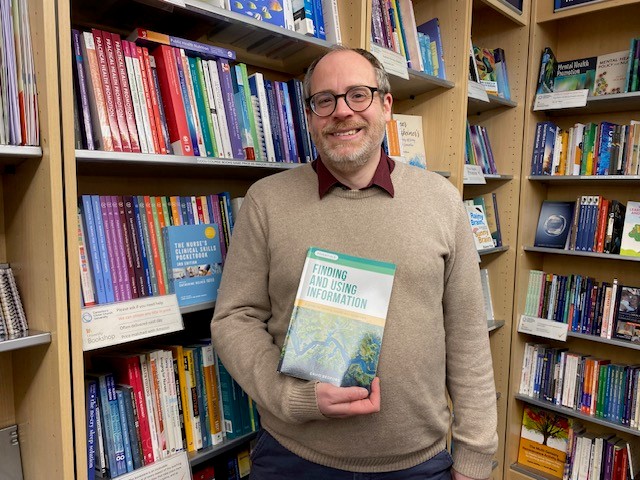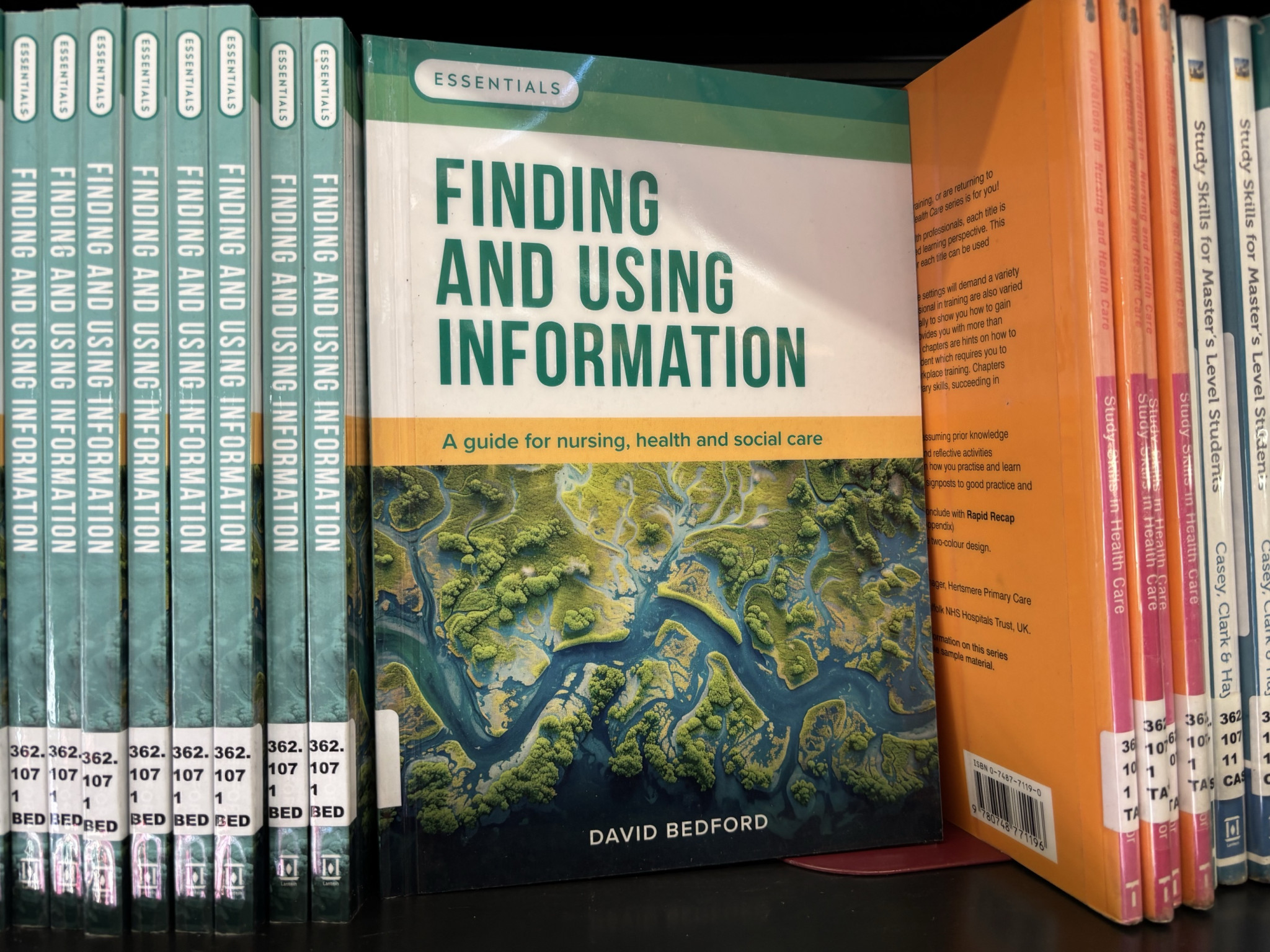Last week was an incredibly exciting week for me. The textbook I spent many, many, many hours writing was published. This is not the first time I have written something. I have been published in local and national blogs and journals, and even co-wrote a musical (The Emperor’s Clothes) with CCCU lecturer Phil Hornsey. However, this is definitely the longest thing I’ve ever written, and is something I am very proud to have achieved.
Quite a few module leaders have already said they’ll be adding this to reading lists. Therefore, my colleagues have made sure we have plenty of copies available through the Library (see LibrarySearch). CCCU’s wonderful University Bookshop has also organised a window display and has the book available at a lower price than Amazon does. Pop in to the Canterbury campus or see the online bookshop.
What is this book?
Finding and using information : a guide for nursing, health and social care, is essentially “what I teach : the book”. As the Learning and Research Librarian for the Medway and Salomons campuses, I support all of the courses at those sites, and teach as part of most of them. My specialism is information, as that’s what librarians are all about. Different courses call on different parts of my skill set, of course. I teach about finding, evaluating, referencing and using information in a wide variety of ways. This ranges from how to find a book in the library, to how to plan and carry out advanced literature searches. From identifying academic material to opportunities for sharing your work more widely.
The book, then, covers health and social care information – what it is, how to find it, how to navigate and understand it and how to reference it. Then moving on to how to dig deeper and how (if you’re brave enough) to share your writing further than simply with your tutors. It is full of examples and practice activities to illustrate each topic.
The most recent similar book I could find is over 10 years old now. Much has changed since then, particularly in terms of digital information sources and the rapid rise of AI. Therefore, most of my chapters include some ideas about the ways in which generative artificial intelligence could help or hinder you in your use of information. These are the vaguest sections, as the AI world is changing rapidly, and I did not want to immediately date the book by referring to the names of tools which could have disappeared in the gap between submitting the manuscript and publishing the book.
The book’s 11 chapters are:
- Seeking information – knowing what you’re looking for
- Locating information – tracking down sources
- Browsing information – understanding the web
- Selecting information – evaluating sources
- Navigating information – the anatomy of a research article
- Organising information – keeping track
- Acknowledging information – citing and referencing
- Sifting information – academic databases
- Scoping information – planning an advanced literature search
- Exploring information – doing an advanced literature search
- Sharing information – getting yourself known
Why is it subject-specific?
The book is specifically aimed at health and social care students, even though I work with a wider range of subjects. However, academic and information skills are not the same across every discipline. There are many things that are similar, of course, but many differences as well. Finding a book on the library shelves is the same regardless of academic discipline, but the wider types of information used can vary hugely, as can the ways to evaluate and work with different information sources.
Making the book subject-specific meant that I could focus the examples, activities and suggested resources around health and social care specifically. Even then, this is a relatively broad area – in the 14 years that I have worked as a librarian, I have worked with students of well over a dozen health and social care professions, and there are many others out there!
A discipline-focused book meant that I could include things which are of particular interest to health and social care. Resources for locating policy and guidelines. The frustrations of different databases defining ‘middle age’ in different ways. A list of very niche health and social care search sites. A discussion of how different types of research are typically viewed within the discipline and my problems with the hierarchical way this is portrayed.
There are large sections which would still be relevant to other disciplines. For instance, how to make sense of web addresses, how to navigate a library or how Boolean operators work. But the book has more value and relevance due to being subject-specific. And this does leave a gap in the market for anyone who’d like to write something similar for another academic discipline.
What’s next?
Will I write another book? Maybe. Lantern Publishing were brilliant, guiding me through the publication process with care and professionalism. But I am not sure what else I would write. I might, if I have time, create some videos reflecting each chapter.
But for now, I will simply hope that the book is useful for students on many of our courses (and beyond). I am passionate about the importance of accessing and using high-quality information, and my intention is that this book will help health and social care students do this.

 Library
Library David Bedford
David Bedford 1067
1067


